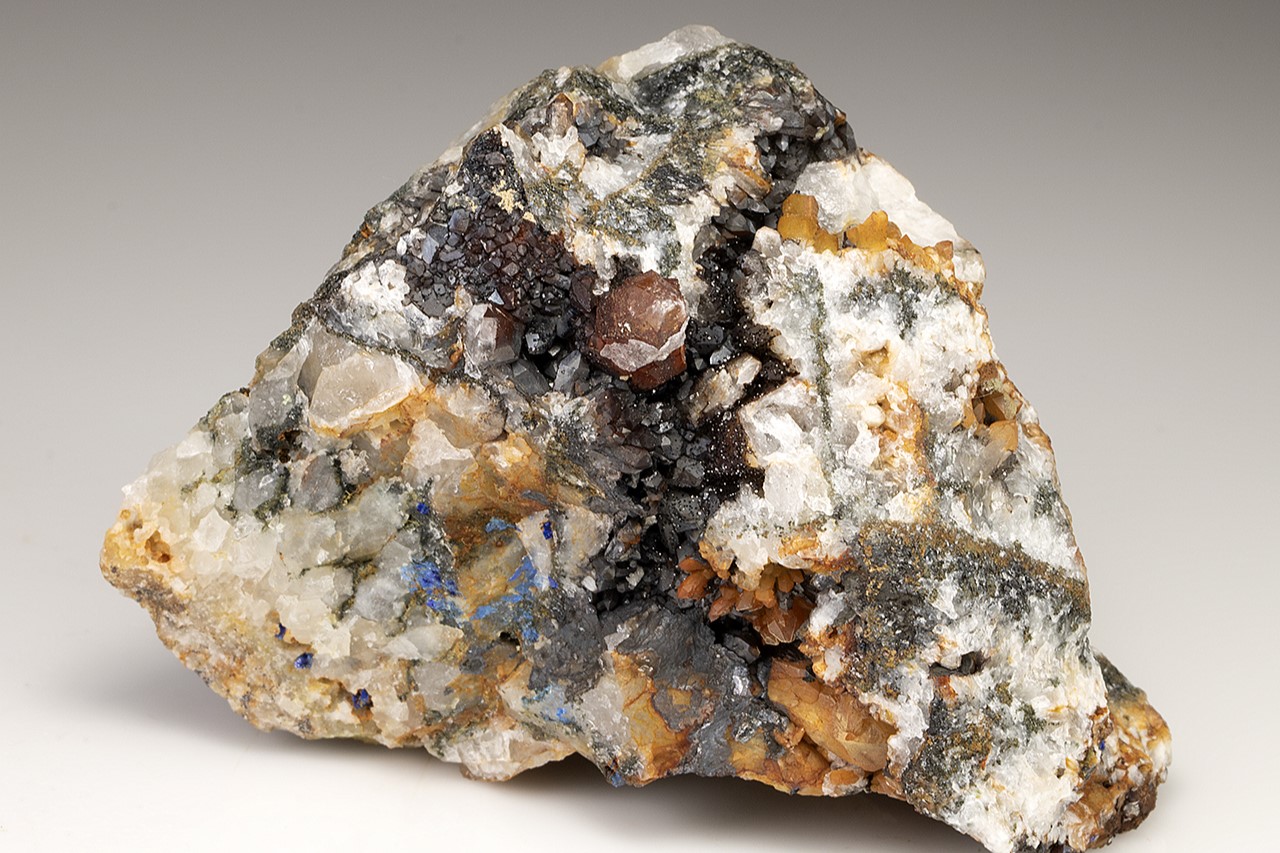
What is Murdochite? Murdochite is a rare mineral composed of lead and copper oxides. Named after Joseph Murdoch, a renowned mineralogist, this mineral often appears in oxidized zones of lead-copper deposits. Its striking black crystals can catch anyone's eye. Where can you find Murdochite? This mineral is typically found in arid regions like Arizona and Mexico. Why is Murdochite important? Beyond its beauty, Murdochite helps scientists understand geological processes and mineral formation. How is Murdochite used? While not commonly used in industry, it holds value for collectors and researchers. Is Murdochite safe? Handle with care; it contains lead, which can be harmful. Ready to learn more? Let's dive into 30 fascinating facts about Murdochite!
Key Takeaways:
- Murdochite is a rare and fascinating mineral with unique properties. It has a metallic luster, high density, and forms in specific geological conditions. It's a valuable addition to any mineral collection!
- Named after Joseph Murdoch, Murdochite is highly prized by collectors and studied in scientific research and educational settings. Its rarity, cubic crystal system, and historical significance make it a standout in the world of minerals.
What is Murdochite?
Murdochite is a rare mineral that intrigues geologists and collectors alike. Named after Joseph Murdoch, a prominent mineralogist, this mineral has unique properties and an interesting history. Let's dive into some fascinating facts about Murdochite.
Physical Properties of Murdochite
Understanding the physical properties of Murdochite helps in identifying and appreciating this mineral.
- Color: Murdochite typically appears black or dark brown, making it easily distinguishable from other minerals.
- Luster: It has a metallic luster, giving it a shiny, reflective surface.
- Hardness: On the Mohs scale, Murdochite has a hardness of 4.5, which means it can be scratched by harder substances like quartz.
- Streak: When rubbed on a porcelain plate, Murdochite leaves a black streak.
- Density: This mineral has a relatively high density, around 6.9 g/cm³, indicating it is quite heavy for its size.
Chemical Composition of Murdochite
Murdochite's chemical makeup is what sets it apart from other minerals.
- Formula: The chemical formula for Murdochite is PbCu₆O₈(OH)₂, indicating it contains lead, copper, oxygen, and hydroxide.
- Elements: It primarily consists of lead (Pb) and copper (Cu), with oxygen (O) and hydroxide (OH) groups.
- Oxidation States: The copper in Murdochite exists in two oxidation states, Cu²⁺ and Cu⁺, which is relatively rare in minerals.
Formation and Occurrence
Murdochite forms under specific geological conditions, making its occurrence quite rare.
- Formation: It typically forms in the oxidized zones of lead-copper deposits.
- Locations: Notable locations include the Mammoth-Saint Anthony Mine in Arizona, USA, and the Tsumeb Mine in Namibia.
- Associated Minerals: Often found alongside minerals like cerussite, malachite, and wulfenite.
Historical Significance
The history behind Murdochite adds to its allure.
- Discovery: Discovered in 1953, Murdochite was named after Joseph Murdoch, a renowned mineralogist.
- First Description: The first detailed description was published in the American Mineralogist journal in 1955.
- Etymology: The name honors Murdoch's contributions to mineralogy, particularly in the study of lead and copper minerals.
Uses and Applications
While not widely used in industry, Murdochite has some interesting applications.
- Collectors: Highly prized by mineral collectors due to its rarity and unique properties.
- Research: Studied in scientific research to understand its formation and properties.
- Educational: Used in educational settings to teach students about mineralogy and crystallography.
Interesting Facts
Here are some more intriguing tidbits about Murdochite.
- Crystal System: Murdochite crystallizes in the cubic system, which is relatively uncommon for minerals.
- Symmetry: It has a high degree of symmetry, making its crystals particularly fascinating to study.
- Synthetic Murdochite: Scientists have synthesized Murdochite in laboratories to study its properties in controlled environments.
- Fluorescence: Unlike many minerals, Murdochite does not exhibit fluorescence under UV light.
- Solubility: It is insoluble in water, which helps it remain stable in various environmental conditions.
- Alteration: Over time, Murdochite can alter to other minerals like malachite or azurite under certain conditions.
- Rarity: Its rarity makes it a valuable addition to any mineral collection.
- Microscopic Examination: Under a microscope, Murdochite reveals intricate details of its crystal structure.
- Environmental Indicators: Presence of Murdochite can indicate specific geological conditions, useful for geologists.
- Specimen Size: Typically found in small specimens, making large samples particularly rare and valuable.
- Market Value: Due to its rarity, high-quality Murdochite specimens can fetch high prices among collectors.
- Preservation: Best preserved in dry, stable environments to prevent alteration.
- Exhibits: Featured in various mineral exhibits and museums worldwide, showcasing its unique properties and beauty.
Murdochite's Fascinating World
Murdochite, a rare mineral, holds a unique spot in geology. Its distinctive properties and uncommon occurrence make it a subject of intrigue for scientists and enthusiasts alike. Found primarily in oxidized zones of lead-copper deposits, this mineral showcases a remarkable blend of lead, copper, and oxygen.
Understanding murdochite's formation and characteristics can shed light on geological processes and mineralogy. Its crystal structure and chemical composition offer insights into the Earth's natural history. Collectors value murdochite for its rarity and aesthetic appeal, making it a prized addition to any mineral collection.
Whether you're a seasoned geologist or a curious learner, murdochite's story is a testament to the Earth's diverse and complex nature. Keep exploring the world of minerals; you never know what other hidden gems you might uncover!
Frequently Asked Questions
Was this page helpful?
Our commitment to delivering trustworthy and engaging content is at the heart of what we do. Each fact on our site is contributed by real users like you, bringing a wealth of diverse insights and information. To ensure the highest standards of accuracy and reliability, our dedicated editors meticulously review each submission. This process guarantees that the facts we share are not only fascinating but also credible. Trust in our commitment to quality and authenticity as you explore and learn with us.
